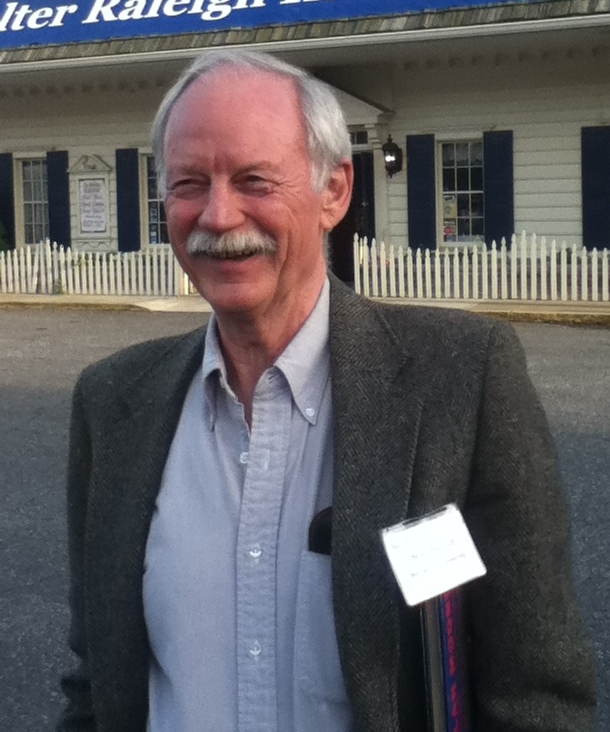Dr. Henry W. Haslach, Jr.
Associate Research Professor
Dr. Haslach's CECD Project
Research Interest
Mechanics of soft biological tissue, including brain tissue and arteries.
Non-equilibrium thermodynamics. Solid mechanics. Dynamical systems.
Books
Henry W. Haslach Jr. (2011). Maximum Dissipation Non-Equilibrium Thermodynamics and its Geometric Structure, Springer, New York
Henry W. Haslach, Jr. and Ronald Armstrong (2004). Deformable Bodies and Their Material Behavior, John Wiley and Sons, NY
Selected Journal Publications
Borrelli J, Haslach HW Jr. (2013). Experimental characterization of axillary/underarm interface pressure in swing-through crutch walking. J Rehabil Res Dev. 2013;50(3), 423-435.
Henry W. Haslach Jr., Lauren N. Leahy, Peter Riley, Rao Gullapalli, Su Xu, Adam H. Hsieh
Solid-extracellular Fluid Interaction and Damage in the Mechanical Response of Rat Brain Tissue Under Confined Compression
Journal of the Mechanical Behavior of Biomedical Materials, 138-150, August 27, 2013.
Henry W. Haslach, Jr., Peter Riley and Aviva Molotsky (2011). The Influence of Medial Substructures on Rupture in Bovine Aortas. Cardiovascular Engineering and Technology. Volume 2(4), 372-387. DOI: 10.1007/s13239-011-0056-4.
H. W. Haslach, Jr. (2010). A Maximum Dissipation Thermodynamic Multi-scale Model
for the Dynamic Response of the Arterial Elastin-water System.
Acta Mechanica, 213, 169 -88. DOI: 10.1007/s00707-010-0301-1.
H. W. Haslach, Jr. (2010). A non-equilibrium thermodynamic model for the crack propagation rate. Mechanics of Time-Dependent Materials. 14, 91-110. DOI: 10.1007/s11043-009-9094-9
H. W. Haslach, Jr. (2009). Time-dependent Mechanisms in Fracture of Paper,
Time-Dependent Materials 13, 11-35, DOI: 10.1007/s11043-008-9074-5
H. W. Haslach, Jr. (2009) Thermodynamically Consistent, Maximum Dissipation, Time-Dependent Models for Non-equilibrium Behavior. International Journal of Solids and Structures 46, 3964-3976. DOI: 10.1016/j.ijsolstr.2009.07.017
H. W. Haslach, Jr. (2005). Nonlinear Viscoelastic, Thermodynamically Consistent, Models for Biological Soft Tissue. Biomechanics and Modeling in Mechanobiology 3, 172-189.
H. W. Haslach, Jr. and J. D. Humphrey (2004). Dynamics of Biological Soft Tissue and Rubber: Internally Pressurized Spherical Membranes Surrounded by a Fluid. International Journal of Non-linear Mechanics 39, 399-420.
H. W. Haslach, Jr. (2002). A Non-equilibrium Thermodynamic Geometric Structure for Thermoviscoplasticity with Maximum Dissipation. International Journal of Plasticity 18, 127-153.
H. W. Haslach, Jr. (2002). A Nonlinear Dynamical Mechanism for Bruit Generation by an Intracranial Saccular Aneurysm. Journal of Mathematical Biology 45, 441-460.
H. W. Haslach, Jr. (2001). Moisture Accelerated Creep. In Handbook of Physical Testing of Paper Vol. 1, Chapter 4, eds. R. Mark and C. Habeger, Marcel Dekker, 173-232.
H. W. Haslach, Jr. (2000). Constitutive Models and Singularity Types for an Elastic Biaxially Loaded Rubber Sheet. Mathematics and Mechanics of Solids 5, 41-73.
H. W. Haslach, Jr. (1997). “Geometrical structure of the non-equilibrium thermodynamics of homogeneous systems”, Reports on Mathematical Physics, Vol. 39, No. 2, 147 - 162.
Patents
Henry W. Haslach, Jr., "Wind turbine heat generating apparatus: with mechanical accelerometer to measure the ratio of shaft angular acceleration to angular velocity squared in order to control the load on a wind turbine".
U.S. Patent 4,596,209.
Henry W. Haslach, Jr. and James R. Borrelli, "Crutch-like mobility assist device with rotatable footer assembly", U. S. Patent 7,581,556.
Henry W. Haslach, Jr. and James R. Borrelli, "Tiltable underarm support mechanism and crutch-like mobility assist device using same", U. S. Patent
7,673,640 B2.


